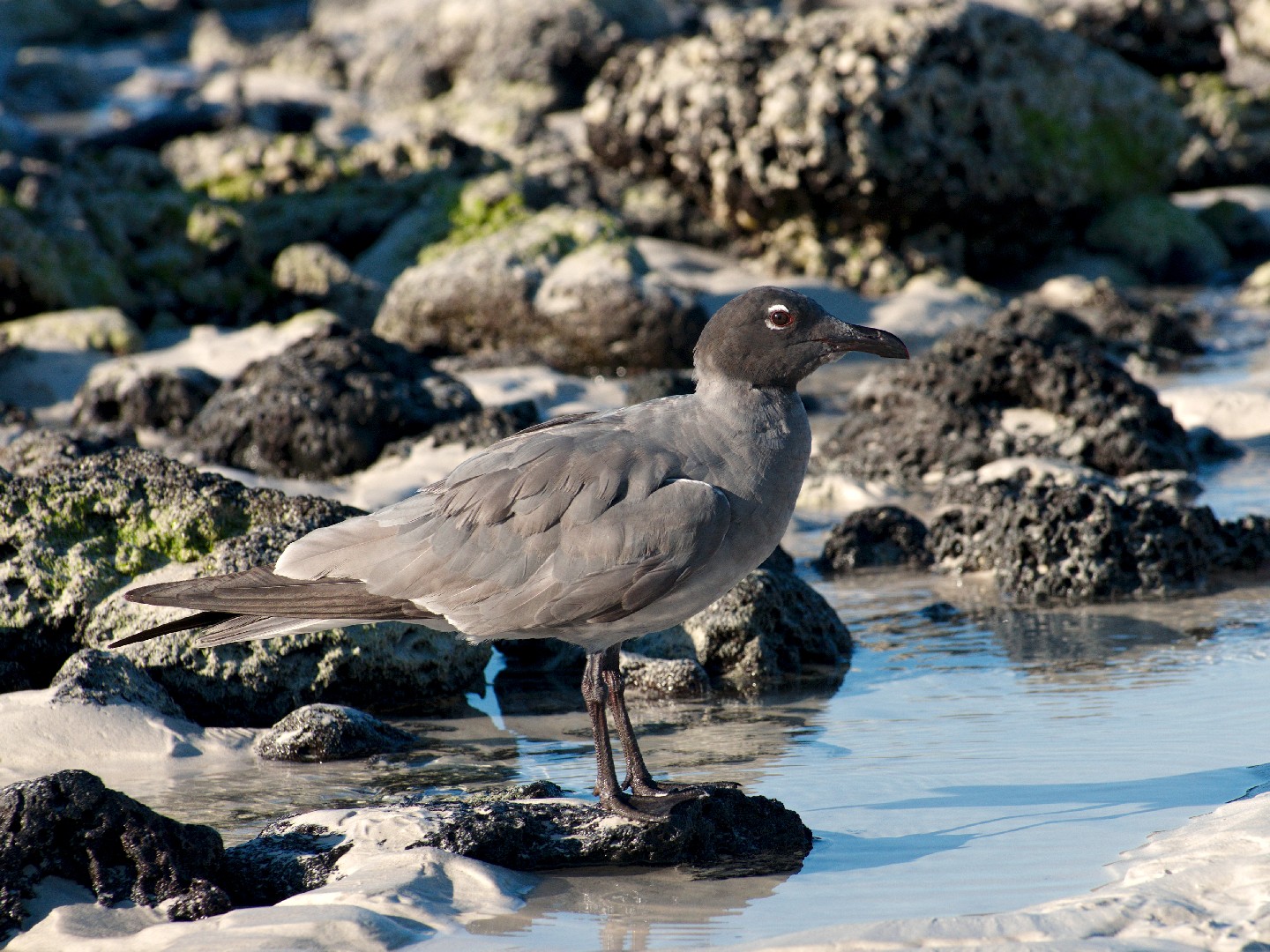Lava Gull
A species of Hooded Gulls Scientific name : Leucophaeus fuliginosus Genus : Hooded Gulls
Lava Gull, A species of Hooded Gulls
Botanical name: Leucophaeus fuliginosus
Genus: Hooded Gulls
Content
Description General Info
 Photo By Victor Gleim , used under CC-BY-SA-4.0 /Cropped and compressed from original
Photo By Victor Gleim , used under CC-BY-SA-4.0 /Cropped and compressed from original Description
The lava gull is a distinctive gull, 51 to 55 cm (20–22 in) and weighs 380 g (13 oz). The adult plumage consists of a sooty brown to black head, which unlike other dark hooded gulls doesn't vary by season. The wings are dark gray with a contrasting white line on the leading edge, thought to play a function in displays and camouflage. Its dark gray body contrasts with a paler gray belly. The uppertail is white and grey lower down. The bill and legs are black, and the inside of the mouth is scarlet. It has white upper and lower eyebrows, with red lids. Immature gulls are generally dark brown. 
Size
55 cm
Colors
Black
Gray
White
Life Expectancy
49 years
Nest Placement
Ground
Feeding Habits
Lava Gull is omnivorous, preying on fish, small crustaceans, hatchling reptiles, and scavenging sea lion placenta. Engages in kleptoparasitism by seizing frigatebird-dropped fish and stealing from nests. They also confront potential threats including owls, frigatebirds, and mammals.
Habitat
Lava Gull predominantly inhabits coastal environments, especially favoring sandy and gravelly beaches, as well as areas in proximity to human activity such as harbors. These birds are adapted to nesting on the ground, often in areas sheltered by coastal vegetation, and they exhibit pronounced territorial behavior when it comes to breeding grounds. They also seek out calm waters near lagoons for nesting. The availability of food sources from nearby seabird colonies and port towns influences their distribution across various islands, with a noteworthy concentration observed in areas like Academy Bay.
Dite type
Carnivorous
General Info
Feeding Habits
Bird food type
Distribution Area
The entire population lives on the Galapagos Islands where it is found predominantly on the islands of Santa Cruz, Isabela, San Cristobal and Genovesa. Previously its population was estimated at 300–400 pairs; this estimate was revised downwards to 300-600 individuals in 2015. It is currently considered the rarest gull in the world. 
Species Status
The lava gull is categorized as "vulnerable" by the IUCN Red List because it exists in small numbers and though the population is stable, it faces numerous threats. 